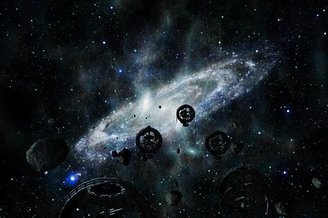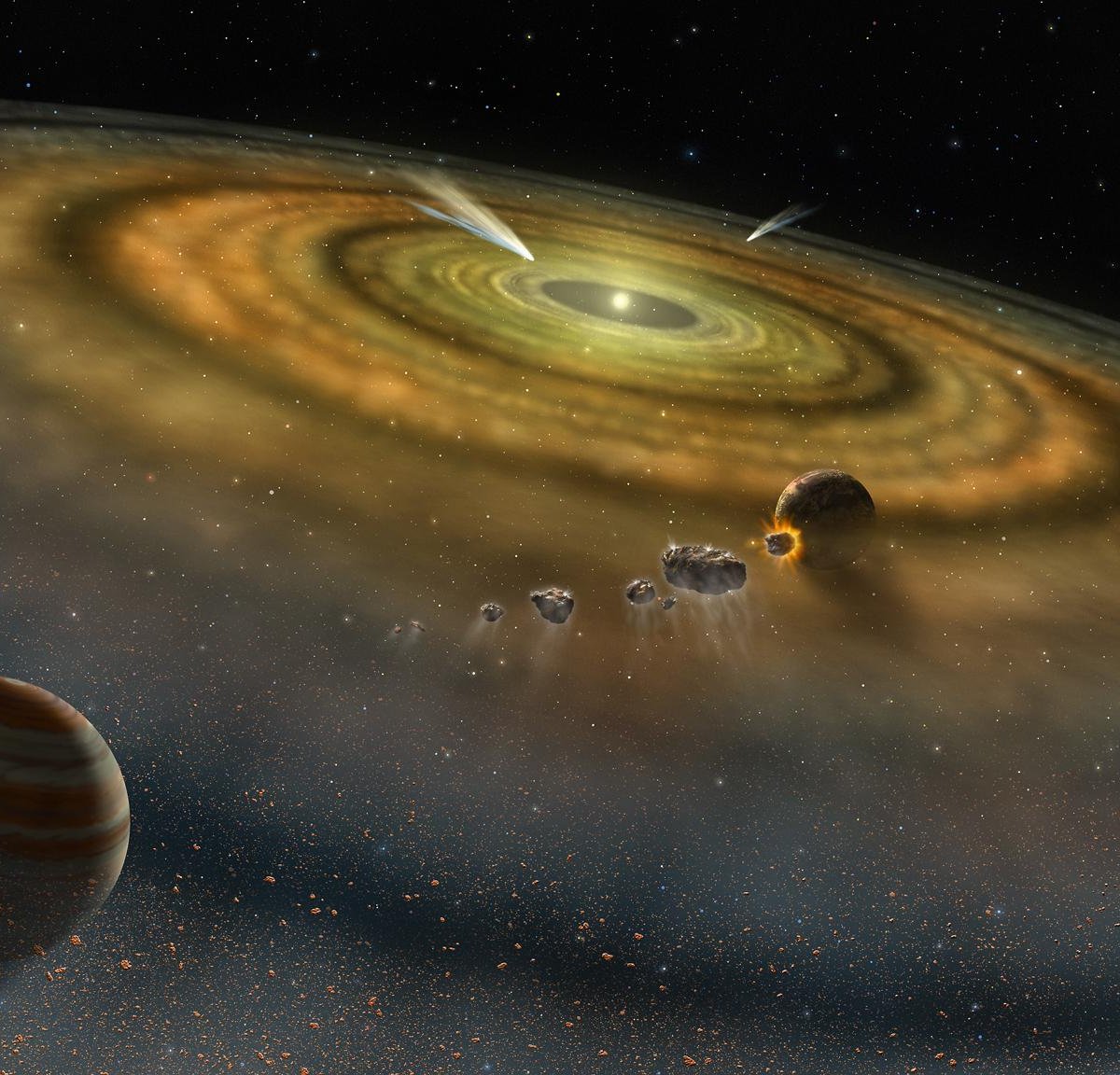The latest discovery of the James Webb Space Telescope (JWST) surprised everyone, and reformulated our understanding of the formation of planetary systems.. But the insights came not from what was observed, but from what the observatory did not see, in this case the dense cloud of dust around the star Beta Pictoris, 63 light-years from Earth.
The “darling” of planetary astronomers, the star in the constellation Pictor is being studied extensively not only because of its proximity to our planet, but also because it is so young. Beta Pictoris, which is 20 million years old, is known for the massive circumstellar disk of gas and dust that forms the planetary system.
Observations made by comparing records taken 20 years ago from the Spitzer infrared observatory with current images taken from JWST, presented recently at the 244th Meeting of the American Astronomical Society held in Madison, USA. They suggest it was an asteroid impact at least 100,000 times larger than the one that killed the dinosaurs on Earth.
How did astronomers discover asteroid collisions?
20 years ago, the Spitizer infrared observatory was observing the Beta Pictoris system, investigating the heat normally given off by crystalline silicate minerals found in stars and forming celestial bodies. A significant amount of dust was found, It was detected at wavelengths of 17 and 24 microns, heated by the heat of the star.
Now an international team of astronomers using JWST has examined the radiation from the same dust particles around Beta Pictoris, comparing it with Spitzer’s findings. The result was a significant reduction in radiation at the same wavelengths compared to 20 years ago.
According to study leader Christine Chen of Johns Hopkins University, “There is a suggestion with the new Webb data that we are witnessing the aftermath of a rare catastrophic event among large asteroid-sized objects, marking a complete change in our understanding of this event.” Star system.”
The discovery’s significance in understanding the formation of planets

Scientists analyzing Spitzer data 20 years ago concluded that smaller objects such as asteroids and comets had collided and “landed” within the protoplanetary disk. The premise was The cloud of dust and gas around the young star was constantly renewed over time.
But when the reality of JWST was revealed, and they noticed that all the dust had disappeared and was not replacedThe question has become different.
Is this process of formation of terrestrial and giant planets common or rare? – asked co-author Kadin Worthen, also from Johns Hopkins. In this context, the astrophysicist concluded, “We are basically trying to understand how weird or average we are.”
Is there anything you want to ask? Tell us on our social networks and get the opportunity to share the article with your friends who love astronomy.
Source: Tec Mundo
I’m Blaine Morgan, an experienced journalist and writer with over 8 years of experience in the tech industry. My expertise lies in writing about technology news and trends, covering everything from cutting-edge gadgets to emerging software developments. I’ve written for several leading publications including Gadget Onus where I am an author.













